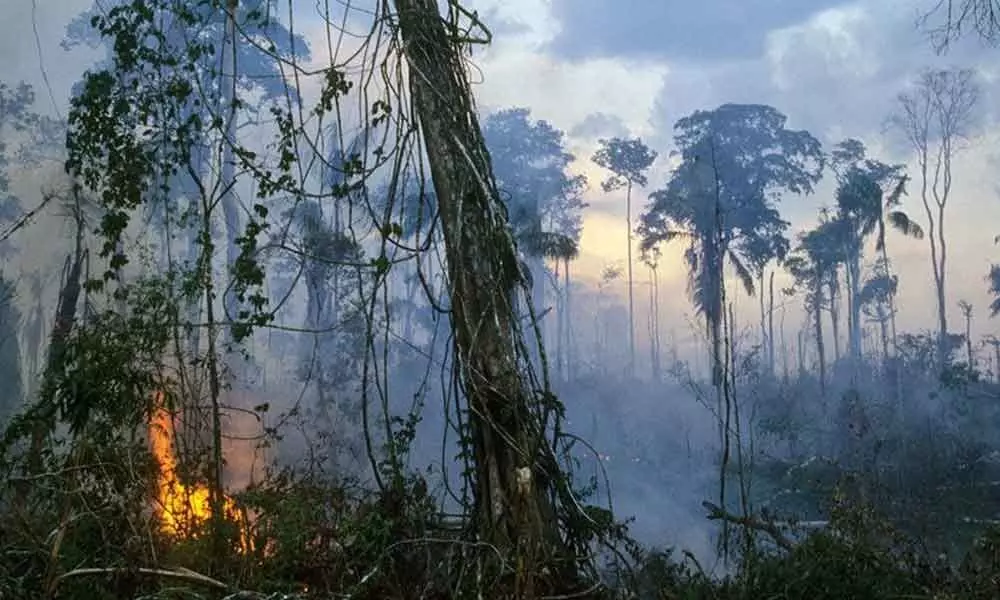Live
- Chandrababu extends Sankranti greetings to Telugu people
- Piyush Goyal urges cleantech sector to go for self-sustaining innovations
- Yogi flags off 100 new buses for Mahakumbh devotees
- Yemen's Houthis to 'pay heavy price' for attacking Israel, warns Netanyahu
- Yogi inaugurates UP Darshan Mandapam
- AAP, BJP cross swords over Purvanchali voters
- Ram Mandir a symbol of faith for generations: HM Shah on 1st anniv of Pran Pratishtha
- Congress Faces Internal Strife as Activists Disagree at Vadde Obanna Birth Anniversary Event
- Comic Con India’s much-awaited 12th edition to be held on Jan 18-19
- Police making efforts to recover weapons disposed of by Maoists: HM
Just In

The regrowth of Amazonian forests following deforestation may happen at a much slower rate than previously thought, according to a new study.
London : The regrowth of Amazonian forests following deforestation may happen at a much slower rate than previously thought, according to a new study.
The research, published in the journal Ecology, monitored forest regrowth over two decades, and shows that climate change, and the wider loss of forests, could be hampering regrowth in the Amazon.
Based on the findings, the researchers, including those from Lancaster University in the UK, predict there could be significant impacts for climate change predictions. They reasoned this could be because the ability of secondary forests to soak up carbon from the atmosphere may have been over-estimated.
Forests regrowing after clear-felling - commonly called secondary forests - have been thought an important tool in combatting human-caused climate change, since they take up large amounts of carbon from the atmosphere.
However, the current study revealed that even after 60 years of regrowth, the studied secondary forests held only 40 per cent of the carbon compared to forests that had not been disturbed by humans.
According to the researchers, continuation of current trends may push the recovery time of forests by well over a century, meaning their ability to help fight climate change may have been vastly overestimated.
Additionally, the scientists said, secondary forests take less carbon from the atmosphere during droughts, while climate change continues to increase the number of drought-years in the Amazon.
"The region we studied in the Amazon has seen an increase in temperature of 0.1 degree Celsius per decade, and tree growth was lower during periods of drought. With predictions of more drought in the future, we must be cautious about the ability of secondary forests to mitigate climate change.
Our results underline the need for international agreements that minimise the impacts of climate change," said Fernando Elias, study co-author from Federal University of Para in Brazil.
Secondary forests, the researchers said, can also provide important habitat for threatened species. However, the current study indicated that the biodiversity levels in the secondary forests were only 56 per cent of those seen local undisturbed forests, with no increase in species diversity during the 20 years of monitoring.
"Our study shows that in heavily deforested areas, forest recovery needs additional support and investment to overcome the lack of seed sources and seed-dispersing animals.
This is different from other areas we have studied where historic deforestation is much lower and secondary forests recover much faster without any human intervention," said study co-author Joice Ferreira from Federal University of Para.

© 2025 Hyderabad Media House Limited/The Hans India. All rights reserved. Powered by hocalwire.com







